Creating a website can be daunting, especially if you’re new to the process. Working with a professional web designer simplifies the task and ensures high-quality results. Here’s a beginner-friendly guide to help you collaborate effectively.
1. Understand Your Needs and Goals
Before hiring a web designer, clarify your objectives. Ask yourself:
What’s the purpose of the website (e.g., e-commerce, portfolio, blog)?
Who is your target audience?
What features are essential (e.g., contact forms, payment gateways)?
Having a clear vision will help the designer create a site that aligns with your goals.
2. Research and Choose the Right Designer
Not all web designers are the same. Take time to find someone whose expertise matches your project. Consider:
Portfolio: Review their previous work to gauge their style and quality.
Experience: Check if they’ve worked on similar projects.
Reviews: Look for client testimonials or reference
3. Set a Realistic Budget
Web design costs vary depending on the complexity of the project. Be upfront about your budget and ask for a detailed quote. Remember to factor in:
Design fees.
Hosting and domain registration.
Maintenance and updates.
4. Prepare a Design Brief
A design brief outlines your project’s details and expectations. Include:
Branding elements (logo, colors, fonts).
Example websites you like.
Features or sections you want on the site.
The more specific you are, the easier it is for the designer to meet your needs.
5. Communicate Effectively
Good communication is key to a successful project.
Be clear: Explain your ideas and preferences in simple terms.
Ask questions: Don’t hesitate to seek clarification on unfamiliar terms.
Provide feedback: Share your thoughts during each stage of the design process.
6. Trust the Designer’s Expertise
While it’s important to share your vision, give the designer creative freedom. They have the skills and experience to make informed decisions about layout, functionality, and aesthetics.
7. Review and Approve the Design
Once the designer presents the initial draft, carefully review it. Check:
If it aligns with your goals.
The usability and responsiveness on different devices.
The overall appearance and navigation.
Provide constructive feedback for revisions until you’re satisfied.
8. Plan for Ongoing Maintenance
A website requires regular updates to remain functional and secure. Discuss maintenance options with the designer, such as:
Adding new content.
Fixing bugs or errors.
Updating plugins and software.
9. Learn the Basics of Website Management
Ask the designer to provide basic training on managing your website. This could include uploading content, monitoring traffic, or using the CMS (Content Management System).
10. Celebrate Your Launch!
Once your website is complete, plan a launch to introduce it to your audience. Promote it on social media, through email campaigns, or via press releases.
Conclusion
By following this guide, you’ll build a strong partnership with your web designer and create a website that reflects your vision. Start your project with confidence and watch your ideas come to life!
Get in touch with us on +254 782 961707, info@conquestcapitalltd.com our social media platforms or our website to learn more.

